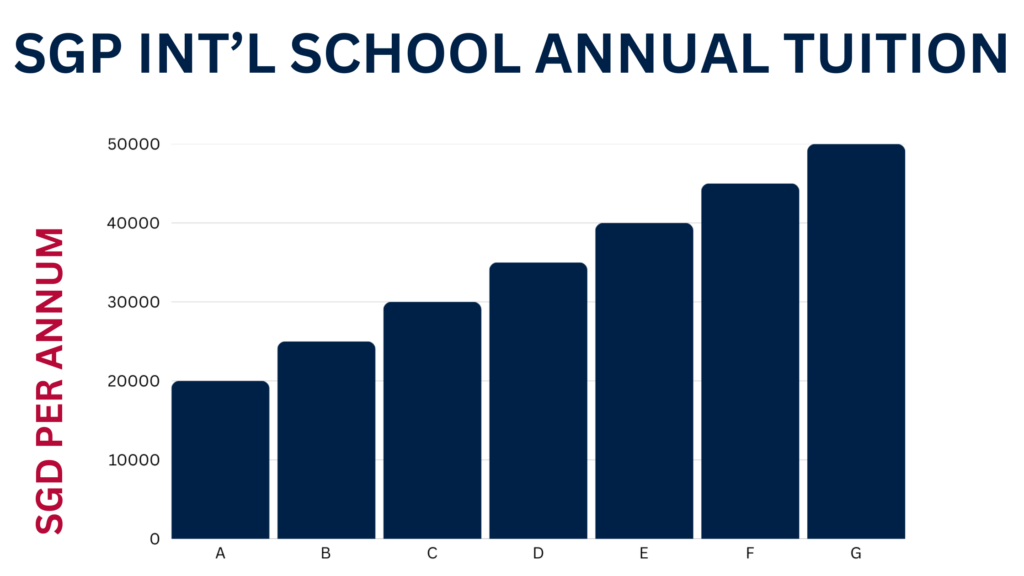Singapore is renowned for its world-class education system, making it a top choice for expatriate families from around the globe. For parents planning a move to this vibrant city-state, selecting the right school is a key priority—and one of the most significant factors to consider is cost. Singapore international school fees can vary widely, influenced by the curriculum, facilities, and additional services provided. Here’s a comprehensive guide to help you understand the range of fees and what to expect when budgeting for your child’s education.
1. The Range of Fees in International Schools
The cost of attending international schools in Singapore typically falls between SGD 20,000 and over SGD 50,000 per year. This figure covers tuition fees for the first year but excludes other expenses such as transportation, meals, and extracurricular activities. The wide range reflects variations in grade levels, facilities, and curricular offerings. Below is a closer look at the different tiers:
Premium Tier Schools
Top-tier institutions like Singapore American School, Stamford American International School, and Dulwich College Singapore charge some of the highest fees. Annual tuition for these schools can range from SGD 45,000 to over SGD 50,000, depending on the grade. These schools offer world-class facilities, a broad range of extracurricular activities, and globally recognized curricula.
Mid-Range Schools
International schools like Chatsworth International, EtonHouse Orchard, and Dover Court have tuition fees in the range of SGD 30,000 to SGD 40,000 annually. These schools maintain rigorous academic standards and offer robust extracurricular programs but at a relatively lower cost compared to premium institutions.
More Affordable Options
Schools such as Invictus International, One World International, and Perse School provide tuition starting from around SGD 20,000 to SGD 30,000 per year. These schools still offer quality education and recognized curricula but may have fewer amenities or a smaller student population.
2. Additional Costs to Consider
When planning for Singapore international school fees, it’s crucial to account for additional expenses beyond tuition:
- Application and Registration Fees: These non-refundable fees range from SGD 200 to over SGD 4,000.
- Building and Development Fees: Some schools charge capital or development fees, which may be one-time or annual.
- Annual Fee Increases: Fees typically rise by 3% to 8% each year.
- GST (Goods and Services Tax): Fees are subject to a 9% GST, which may not be included in the listed tuition.
- Payment Schedules: Schools may require payments termly (three times per year) or semesterly (twice a year).
- Extracurricular Activities: Specialized programs, sports, and trips often come with extra fees.
- Transportation: School bus services cost between SGD 2,000 and SGD 4,000 annually.
- Uniforms, Books, and Supplies: These additional expenses can add up significantly.
3. Factors Influencing International School Fees
Several elements affect the cost of tuition at Singapore’s international schools:
- Curriculum: Schools offering specialized programs like the International Baccalaureate (IB) or American Advanced Placement (AP) often charge higher fees due to resource and training demands.
- Location: Land and rent costs in prime areas drive up tuition prices.
- Facilities: Premium schools boast top-tier amenities such as swimming pools, theaters, and sports complexes, which contribute to higher costs.
- Teacher-Student Ratio: Smaller class sizes require more teaching staff, increasing operational expenses.
4. Making the Right Choice
Balancing cost with quality and your family’s priorities is key when selecting an international school. Here are some tips to guide your decision:
- Visit Schools: Touring campuses helps you get a feel for the environment and facilities.
- Evaluate the Curriculum: Ensure the program aligns with your child’s academic and career aspirations.
- Assess Your Family’s Needs: Different fee structures suit different priorities—consider what matters most for your child’s education.
- Consult Experts: Organizations like ED-SG offer a comprehensive database of Singapore international school fees and can help match your budget with suitable options.
Conclusion
Singapore international school fees reflect the country’s commitment to high-quality education. By understanding the range of costs and additional expenses, families can make well-informed decisions that balance financial considerations with academic and personal goals. Prioritize your child’s unique needs, and you’ll be well on your way to finding the ideal educational environment.






